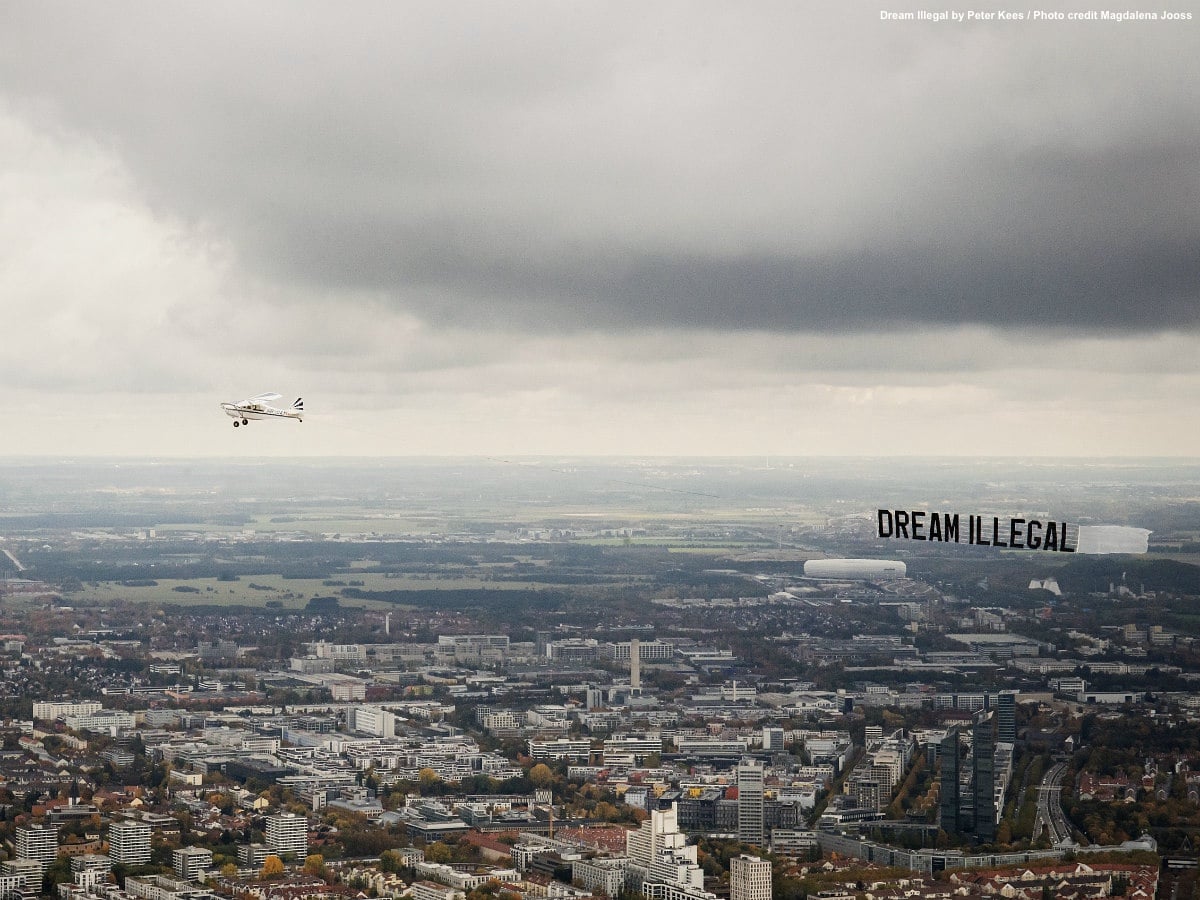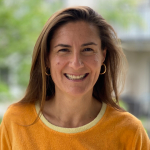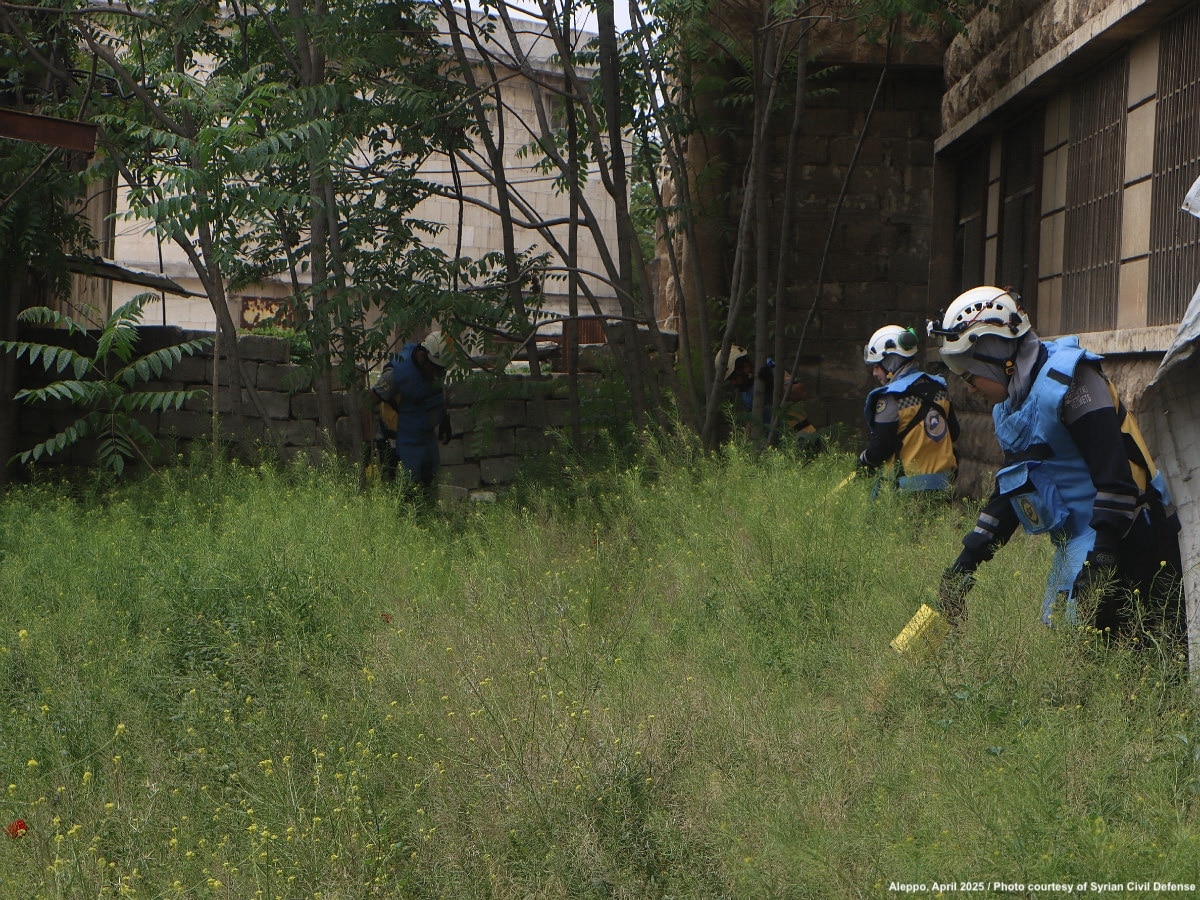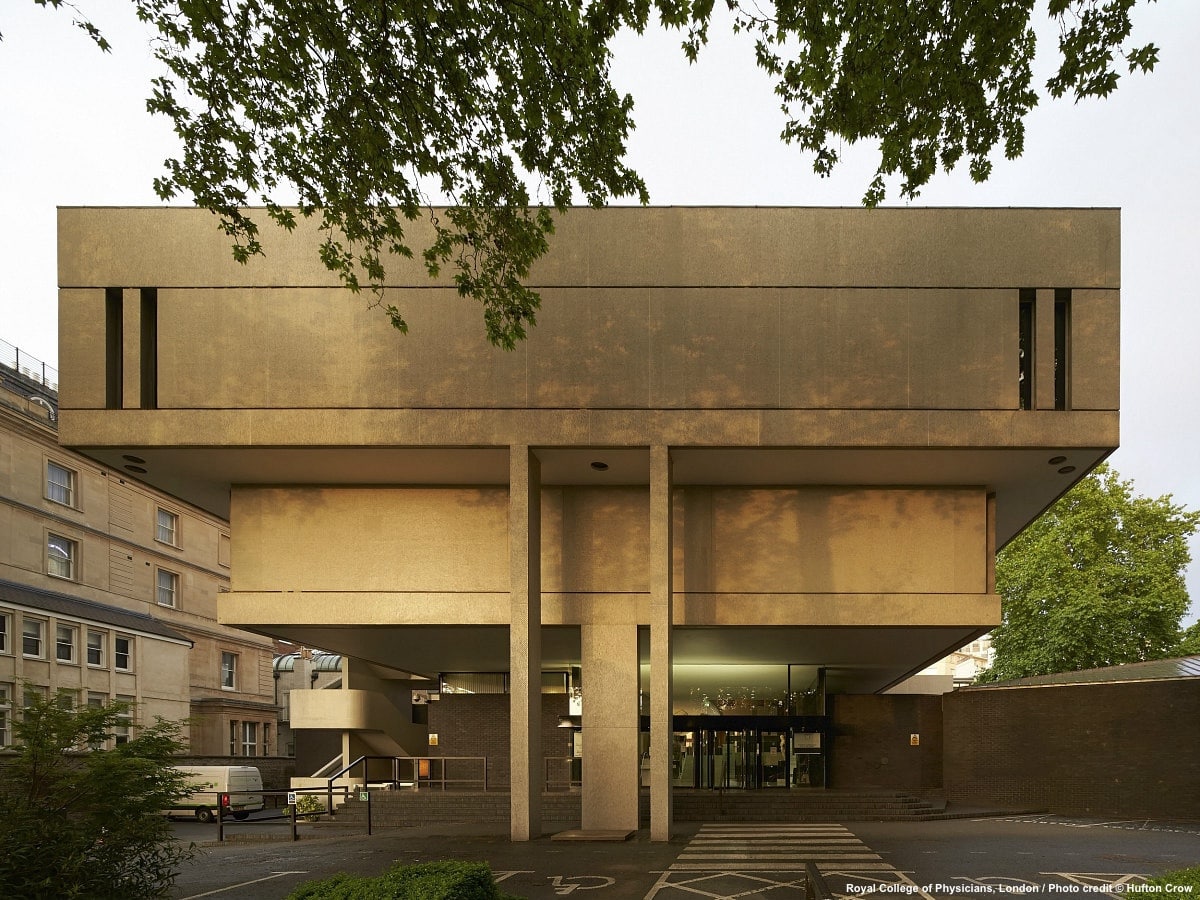Listen to the audio version of this article (generated by AI).
It is Saturday morning in Munich, and as the day begins to clear up, Königsplatz, one of the main squares, starts to get busy. Tourists wander around, taking pictures on their way to the many museums in the area. Between the neoclassical columns of the buildings in the square, a broom and a bride show up for a photo shoot. Meanwhile, a group of people arrives, searching the sky for something.
Suddenly, excitement rises among the group as they point to a small airplane overhead. A banner hanging from its tail reads: “Dream Illegal.” More people start to spot it, too. I ask those standing and watching, “Do you dream illegally?” Their expressions indicate that the idea had never crossed their minds before.
“People are always talking about the current crises: wars, climate change, and many social issues. Yet, our society is moving toward mainstream views and political correctness,” says German artist Peter Kees. He is a chronicler and observer of contemporary social phenomena, whose Konzeptkunst (conceptual art) often questions the status quo.
We meet as he showcases his public art project “Dream Illegal” at the square Königsplatz, in cooperation with PLATFORM Munich and supported by the city’s cultural department. While the airplane loops several times over Munich’s city center, spreading the message “Dream Illegal,” volunteers, wearing vests with the same message, distribute leaflets (zines) among passersby.
“Subversive is not illegal,” “Don’t let yourself get stressed,” and “Most of the time, much more is possible than you think” are statements Kees has compiled from interviews with artists and urban activists. People discover these messages as they unfold the leaflets.
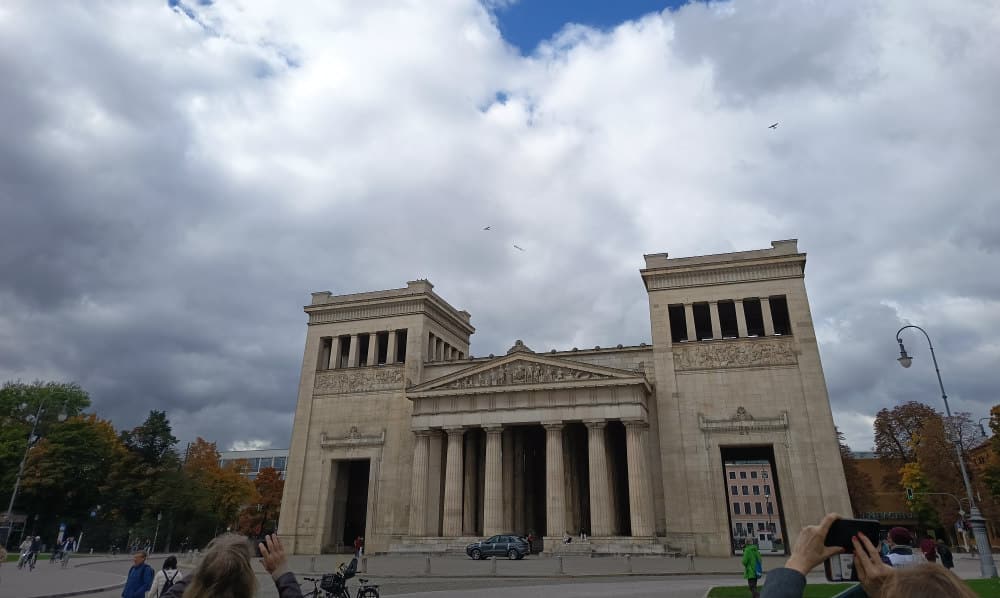
In today’s world, characterized by global crises, social tensions, and increasing uncertainty, Kees believes that dreaming has taken on a new and deeper meaning. For him, what was once seen as a private longing is now increasingly perceived as a subversive act. “Dreaming means to be dissatisfied with the way it is,” he explains. It means to allow doubt – and to muster the courage to imagine change. While Kees explores the natural or socially determined boundaries and constraints that shape human experience, his artwork delves into the implicit alternatives—human desires, ideals, and utopias.
“Thoughts are free, and there’s nothing illegal about dreaming. You can think whatever you want and dream as illegally as you desire. We must encourage people not to allow their minds to be restricted. The result of such freedom can often lead to actions. People take action inspired by the limitless fields of thought, or in other words, by their imaginative dreams,” he explains.
However, others may argue that behaving differently from what is officially accepted can sometimes have negative consequences. “This has happened in the art world as well,” he laments. “Exhibitions have been canceled, among other repercussions. So one must be very careful these days.” “What role do the arts play in a society increasingly marked by rigidity and instability?” Kees questions during our conversation. “How can we move toward a world that is not headed for destruction, but rather fosters a life that is, in the broadest sense, pleasant for everyone on this planet?”
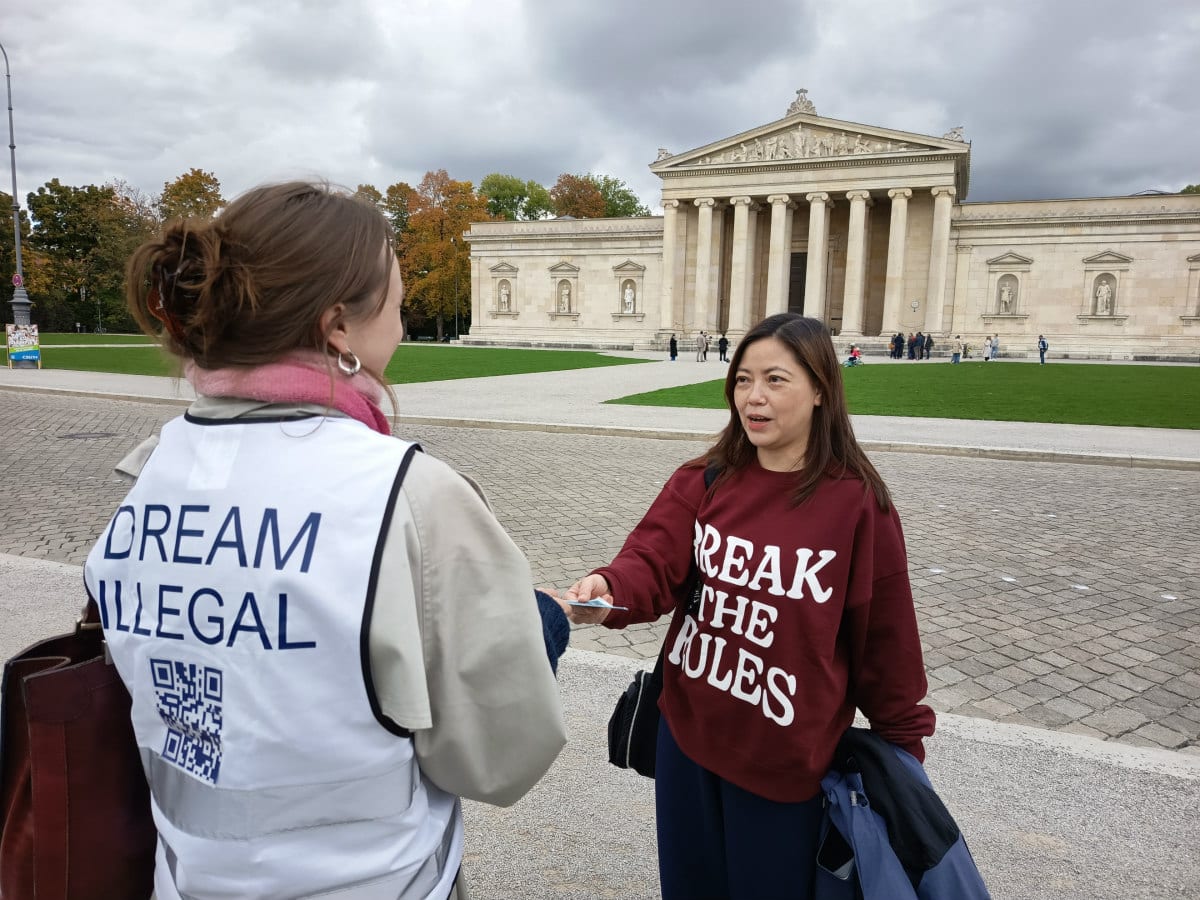
This is the question at hand, and Kees’s public art project seeks to combat the silencing of hope, imagination, and utopia. There is no better venue for this poetic call than public spaces, “especially since they are becoming increasingly commercialized,” he adds. “Dream Illegal” serves as proof of this concern. As volunteers approach passersby to distribute flyers, many people dismiss the opportunity, perceiving it as just another advertising flyer or promotional brochure.
But this people’s reaction goes beyond mere annoyance at commercial activities overtaking our streets; there is a general sense that interest in the arts is diminishing, Kees notes. “Against this backdrop, it’s essential that we artists—something hardly new—develop strategies and methods for artistically subversive actions in public spaces, enticing audiences to think and change.”
***
These words resonate from Munich to Berlin. Two weeks before the “Dream Illegal” action, I found myself in Berlin, driving through the city in rickshaws during the launch of the second edition of “Art in the City.” This public art project not only pushes the boundaries of traditional poster formats in public spaces to attract people’s attention, but it also introduces two interactive works that actively invite public participation.
As we rolled through bustling crowds, our rickshaws stopped at Kottbusser Damm, situated in the cultural melting pot of Kreuzberg and Neukölln. On a corner between the two districts, Los Angeles-based artist Edgar Arceneaux and his daughter Zora Arceneaux present “Colors of My Home.” In this colorful neighborhood of its own, the artists ask locals: What colors remind you of “home”?
On a black scratch-off surface, passersby can use a coin or any object to rub away the top layer and reveal underlying colors like “Wine Red,” “Sea Foam,” or “Midnight Purple.” As more people contribute, a collective, multicolored portrait of “home” gradually takes shape, reflecting the neighborhood’s diversity.
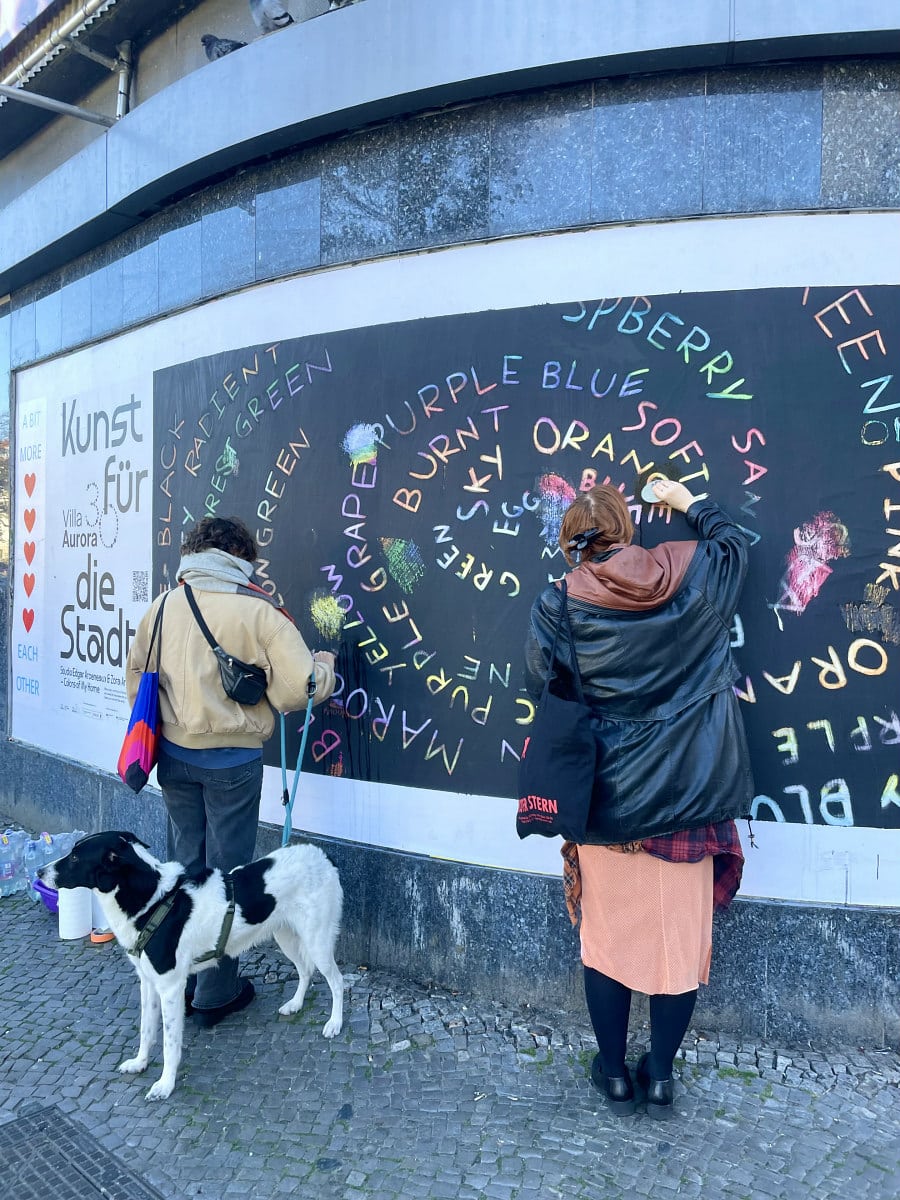
How a Los Angeles–based artist shows his work on a corner in Kreuzberg, Berlin, is a different story. Edgar Arceneaux is one of nearly 500 artists who have participated in the nonprofit Villa Aurora’s artists’ residence program in Pacific Palisades, LA—a home once occupied by German novelist and playwright Lion Feuchtwanger and his wife Marta after they fled from National Socialism in Germany. To celebrate the 30th anniversary of the program, curator Clara Becker selected four artists and one artist duo to showcase their work in public spaces in Berlin for two weeks.
“With this project, we wanted to give something back to the people of Berlin that demonstrates once again that art can exist beyond the walls of museums, integrating into our everyday lives and public spaces,” explains Becker. “Art has a unique significance in the context of public spaces, which are often dominated by advertising, political campaigns, and similar activities.”
Berlin used to have many open public spaces, including vacant lots and unused buildings. This environment allowed artists to flourish, but since Germany’s reunification, the city has gradually lost many of those spaces. At Alexanderplatz, Wiebke Loeper’s poster with photographs from Berlin 1996/97 reflects the rapid urban transformation of post-reunification Berlin.
Recommended Read: Françoise Schein: The Most Public, Yet Unknown Urban Artist
Her images capture a moment when demolition threatened iconic sites such as the TV Tower or Kino International—and when a bank and hotel replaced her own childhood high-rise building near Alexanderplatz.
“At that time, I often wondered: What kind of strange country am I coming from? I felt that everything was disappearing incredibly quickly in the mid-90s, and I captured that through photography. In this location, there used to be a different country,” says Loeper. Her photographs establish a biographical connection that bridges past and present while tracing the complex layers of urban life.
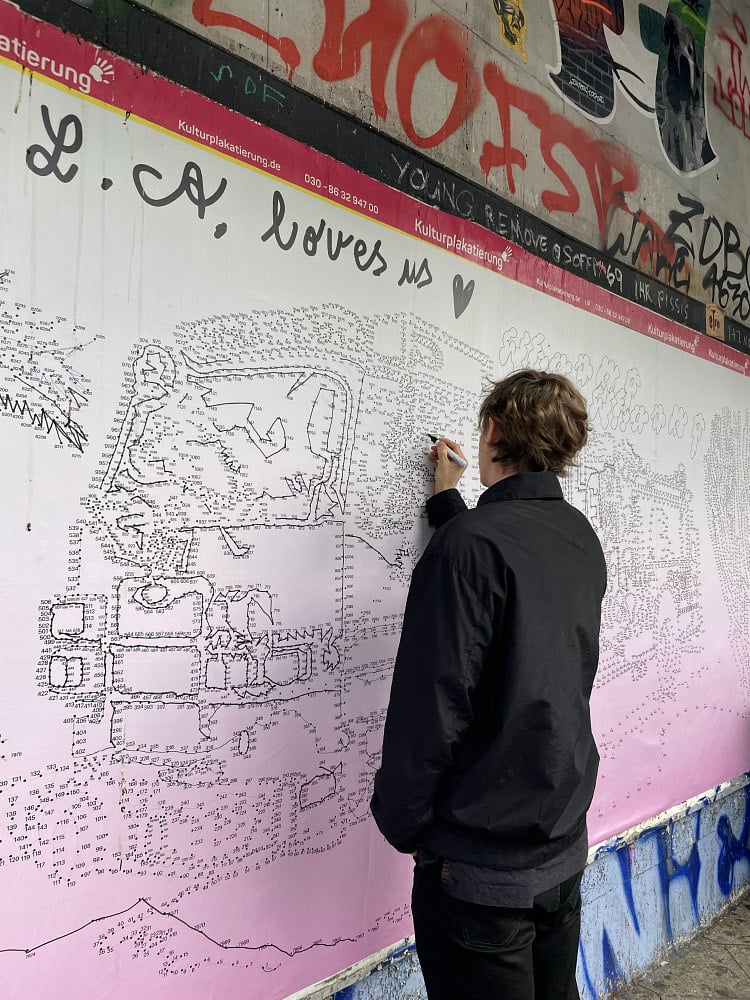
For the residents of Kreuzberg, Lukas Glinkowski presents “Connect the Dots,” an interactive artwork consisting of over 10,000 numbered dots that passersby can connect in sequence, reminiscent of children’s puzzle books.
This piece traces back to his 2019 residency at Villa Aurora in Los Angeles, where he witnessed the Pacific Palisades wildfires firsthand. Dedicated to firefighters, both past and present, the artwork weaves together natural elements, human responses, and personal memories into a shared visual narrative.
Los Angeles is also present in two other “Art in the City” artworks to reflect the cultural dialogues between both cities. On Potsdamer Straße, Janine Eggert’s Googie Horizon assembles eight of her photographs of the so-called Googie architecture from the 1930s to 1960s, typically found in diners, coffee shops, gas stations, and bowling alleys in Los Angeles. She created a fictional cityscape that fits well in the neighborhood, bustling with bars, shops, and erratic apartment buildings.
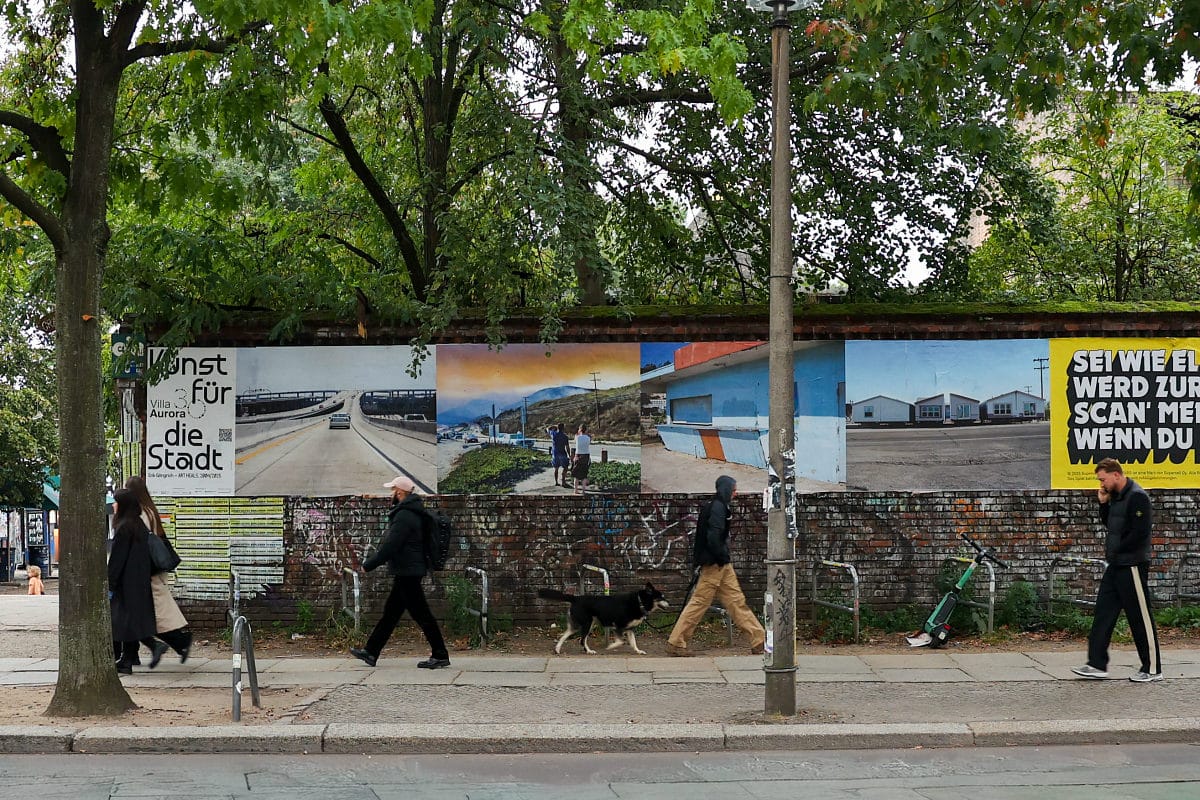
At the former industrial site RAW Area, Erik Göngrich’s poster combines images of cars and wildfires with the phrase ‘ART HEALS.’ In contrast to the smoke and destruction, the piece raises the question of whether art can be viewed as a cycle of repair.
One of the images depicts a vast, steep motorway in LA with nothing on the horizon, which, although it has a dystopian character, Göngrich describes as “liberating because it feels like you’re almost driving into the sky.”
Artists in Berlin and Munich agree on the importance of art in public spaces, to raise questions, address concerns, provide diverse perspectives to people from all walks of life, and perhaps to heal. Like “Art in the City” in Berlin, I wonder if Kees’ project “Dream Illegal” also, in a way, alludes to the United States, where the American Dream has become increasingly difficult to achieve. But he reminds us that the act of dreaming itself has become a form of resistance—uncomfortable, disruptive, and filled with radical hope.
